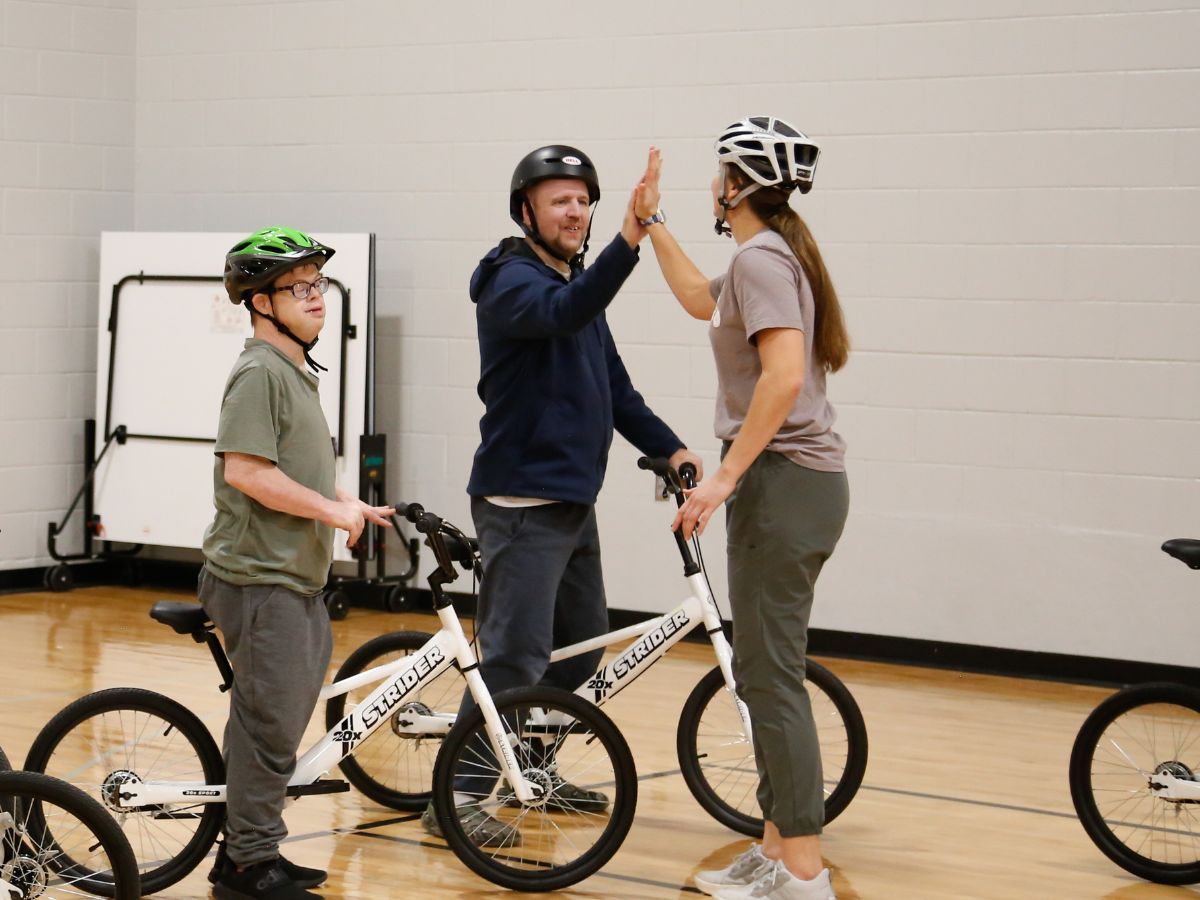
The Benefits of Exercise for People With Disabilities
Exercise is a cornerstone of maintaining a healthy lifestyle for everyone, including people with disabilities. Engaging in physical activities can offer a multitude of benefits that significantly enhance the quality of life. This article delves into the various advantages of exercising for people with disabilities, and how organizations like All Kids Bike are fostering inclusivity in the fitness realm through their Inclusive Learn-to-Ride Program.
Physical Advantages
Exercises for people with physical disabilities are tailored to suit individual capabilities, focusing on enhancing strength, flexibility, and cardiovascular health. Here are some of the physical benefits:
- Improved Muscle Strength: Regular exercise helps in building muscle strength, which is crucial for maintaining mobility and independence. Strength training using resistance bands or lightweight dumbbells can be particularly beneficial.
- Enhanced Cardiovascular Health: Cardiovascular exercises boost heart health, reducing the risk of heart-related ailments. Activities like swimming or exercise bikes for disabled individuals are great options.
- Better Flexibility and Joint Health: Engaging in exercises that improve flexibility can help alleviate joint pain and other physical discomforts. Stretching routines and yoga are excellent for promoting flexibility and joint health.
- Increased Endurance: Over time, engaging in regular exercise can help increase endurance, making daily activities less fatiguing.
Mental and Emotional Well-Being
The psychological benefits of exercise are immeasurable. Being active can significantly improve mental health, offering a sense of accomplishment and positivity.
- Boosted Self-Esteem: Achieving exercise goals can foster a sense of achievement, boosting self-esteem. All Kids Bike emphasizes this aspect, advocating for inclusive exercise programs.
- Alleviated Symptoms of Depression and Anxiety: Regular exercise can help in managing symptoms of depression and anxiety by promoting a better mood and overall well-being. The rhythmic and repetitive nature of exercises like biking or swimming can be particularly soothing.
Social Interaction
Exercise programs create an avenue for social interaction, which is pivotal for building relationships and improving social skills. These programs often provide a supportive and understanding environment that can significantly enrich the social lives of individuals with disabilities. Furthermore, participating in group exercises or community sports events can foster a sense of belonging and camaraderie among individuals with disabilities.
The shared experiences in these settings can lead to meaningful friendships and a supportive network that is invaluable for enhancing one’s quality of life. Through engaging in social exercise programs, individuals can also develop crucial communication skills, bolstering their self-confidence in other social scenarios.
Suitable Exercises for Individuals With Disabilities
- Seated Exercises: Ideal for individuals with limited mobility, these often focusing on strengthening the upper body. Seated leg lifts, arm circles, and seated tap dance are examples of seated exercises.
- Water Aerobics: Provides a low-impact environment for exercising, which is gentle on the joints. The buoyancy of water also supports the body, making movements easier.
- Adaptive Yoga: Tailored yoga poses accommodate different abilities, promoting flexibility and relaxation. Many yoga instructors offer adaptive classes for individuals with various disabilities.
- Biking: Learning to ride through the All Kids Bike Inclusive Learn-to-Ride Program is an excellent way to introduce bicycling to individuals with disabilities, and is a great cardiovascular exercise that can be done indoors.
Individuality in Exercise Regimens
Each individual with disabilities is unique, possessing a distinct set of abilities, preferences, and limitations. Therefore, the types of exercises that one may engage in are highly personalized. Some may find water aerobics or biking to be suitable, while others might prefer seated exercises or adaptive yoga.
The key to a successful and beneficial exercise regimen lies in tailoring the activities to the individual’s capabilities and interests. It’s beneficial to work with healthcare providers and fitness professionals specializing in adaptive exercise to design a program that is both enjoyable and beneficial. This personalized approach not only addresses the individual’s physical needs but also promotes a positive, empowering experience that enhances overall well-being.
Through customized exercise routines, individuals can discover activities that resonate with them, fostering a long-term commitment to an active lifestyle. Furthermore, organizations like All Kids Bike aim to promote inclusivity, recognizing the diverse abilities of individuals, and providing resources that cater to a wide spectrum of capabilities.
Discovering Freedom on Two Wheels: The Joy of Bicycling
Learning to ride a bike can be a liberating experience for individuals with disabilities who can do so. Bicycling is not only a great form of exercise but also a means of enjoying the outdoors and gaining a sense of independence. All Kids Bike has resources on the benefits of bicycle riding and how biking can improve mental health.
Making Exercise a Fun Endeavor
Incorporating fun activities like bicycling can make exercise an enjoyable routine rather than a chore. All Kids Bike provides insights on how to make exercise enjoyable, advocating for a balanced approach to physical education, as discussed here. Creative ways to incorporate exercise, like dance or interactive video games, can also make physical activity an exciting part of the daily routine.
Exercise is a gateway to unlocking a better quality of life for individuals with disabilities. Tailored exercise programs for people with disabilities not only cater to physical health but also nurture mental, emotional, and social well-being. By embracing an active lifestyle and utilizing resources like those provided by the Inclusive Learn-to-Ride Program, individuals with disabilities can lead a fulfilling, healthy, and active life.
If you have a school or organization that would benefit from the Inclusive Learn-to-Ride Program, please send them a link to apply. Contact us to learn more or check us out on Instagram, Twitter, Facebook, YouTube, and LinkedIn!